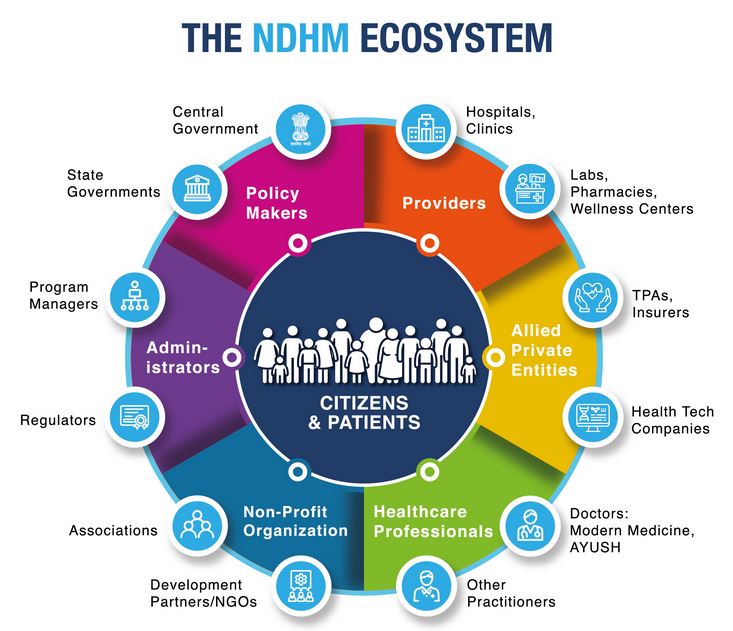Preamble
On 1 February 2022, our Hon. Finance Minister presented her fourth budget in the Parliament and introduced the “Amrit Kaal” in Point 4 of her speech, “we are marking Azadi ka Amrit Mahotsav, and have entered into Amrit Kaal, the 25-year-long leadup to India@100. Hon’ble Prime Minister in his Independence Day address had set-out the vision for India@100.”
Point 5 of the Budget Speech outlined the vision for Amrit Kaal, “By achieving certain goals during the Amrit Kaal, the government aims to attain the vision. They are:
- Complementing the macro-economic level growth focus with a micro-economic level all-inclusive welfare focus,
- Promoting digital economy & fintech, technology enabled development, energy transition, and climate action, and
- Relying on virtuous cycle starting from private investment with public capital investment helping to crowd-in private investment.
The Finance Minister has envisioned to develop ‘sunrise opportunities’ such as artificial intelligence, genomics, and pharmaceuticals to assist sustainable development and modernise the country. However, this is more on the supply side industrial development. But the core issue of healthcare infrastructure is not addressed. Envisioning the Indian population which we would like to be a healthy one by 2047 when we enter India@100. I believe that Budget 2022 missed out a huge opportunity in envisioning Healthcare 2047! Here are my reasons.
Current Undergoing Transformation in Healthcare
The country has undergone a tough time during the pandemic. The Government has played its enabling role in ensuring the supply chain disruptions with China does not lead into a health crisis of sorts. On the other hand, the funding of Covid-Vaccine and immunization has ensured that the country emerges quickly into an endemic phase of Covid pandemic. While this was going on, there was strengthening and upgrade of the digital health infrastructure. The pandemic has also taught lessons to the private healthcare delivery ecosystem to restructure their business models and ensure that there is a push toward lower costs healthcare delivery models. These transformations have demonstrated India’s resilience in its healthcare systems to face emergency situations like the current pandemic.
India’s Amrit Kaal’s Population Demographics
As the chart below demonstrates that India’s population by 2047 will be shifting towards middle age bulge. Over 300 million (~19% of the total population) will be senior citizens by 2047. Our dependency ratio will be around 40%. These 40% will be in the tax paying bracket which will provide the then Finance Minister in 2047 the revenues to spend for different welfare programs including healthcare.

Lessons from Elsewhere in the World
In early 2000, I was involved in restructuring the healthcare systems of Saudi Aramco. Being the largest oil producer in the world, the company had been underfunding the pension and healthcare benefits of their employees who were going to be retiring in the future. The financing of these healthcare benefits created a financial crisis of sorts which have to be funded.
USA has also being facing such challenges when its baby boomers have now become unproductive senior citizens and their total healthcare bill is currently 18% of their GDP.
Vision for India’s Amrit Kaal Healthcare Delivery to Avoid Maha Kaal
As per current estimates, our country requires USD 400 billion of investments in healthcare infrastructure on our current demography to meet the global norms. There are no allocation in the current National Infrastructure Pipeline (NIP) funding for healthcare. Therefore much of the investment will be private sector driven in the future for healthcare infrastructure.
Such experiences elsewhere in the world remind me that our Amrit Kaal in 2047 does not end up as Maha Kaal of our Amrit Kaal where we would have to look up to Indian Gods who were invoked to end the situation. There have been several demands in the last few budget to accord infrastructure status to the healthcare industry. The current budgetary allocations to healthcare all though increasing has not been sufficient to build capital formation for healthcare infrastructure in the country. From the current 2.5% of GDP, there needs to broaden the spend on healthcare. We need the real picture of the input and outputs in healthcare. With the current GST regime of zero tax on healthcare services, we are not able to gather the real value of healthcare in the country and healthcare should be under minimum GST slab so that there is pass through benefits of the inputs that are set off. This will lead to a lot of transparency and provide real hard estimates of healthcare spend of the country.
Assuming by 2047 our dependency ratio will be lower than today. Which means that the total taxpaying population in 2047 may be same as today or even lower. There needs to be a plan to ensure that current taxes from the current population who will become senior citizens by 2047 will be underfunded like in the examples that I have mentioned below, leading into a budgetary crisis.
In all earnest, given the current constraints the current budget 2022 could do so much for healthcare. But now that the Amrit Kaal is out of the bag, there needs adequate focus to healthcare to avoid healthcare Maha Kaal in 2047 when we enter India@100.




